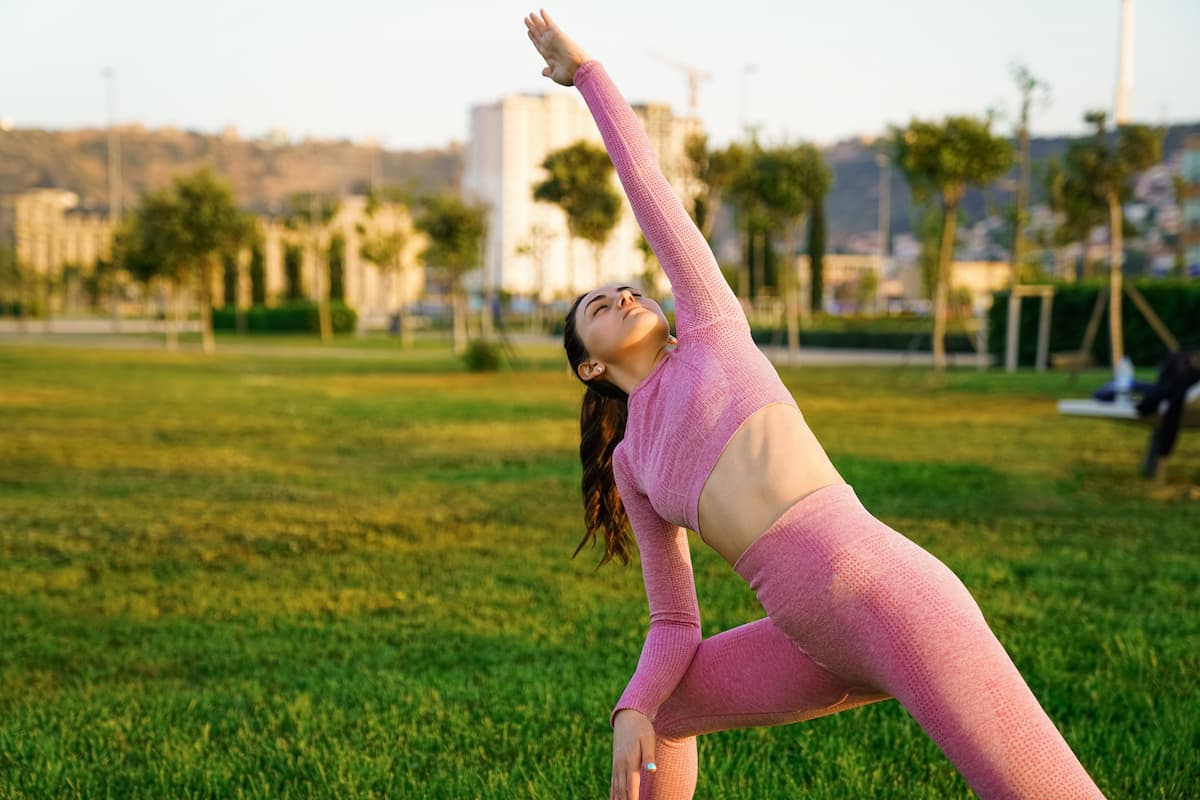Running is known to provide a plethora of physical and mental health benefits, but it can also be tough on your body if you don’t take the time to properly warm up and cool down.
That’s where yoga comes in. Practicing yoga before or after running can optimize your performance, increase flexibility, and aid in overall recovery.
In this article, we’ll discuss the advantages of incorporating yoga into your fitness routine and how to effectively combine them for maximum results.
Benefits of Yoga for runners
Improved flexibility: Yoga is an excellent way to increase flexibility, which could help prevent injuries from tight muscles. By performing targeted stretches before and after your run, your muscles will become more pliable and less likely to sustain any damage.
Better running form: Many yoga poses focus on proper alignment and posture, strengthening key muscle groups that support better movement patterns when running. Proper alignment reduces strain on the joints and the risk of injury as well.
Mental clarity and focus: Mindfulness is at the core of every yoga practice, which means that by practicing regularly, runners can improve concentration, reduce stress, and potentially even enhance athletic performance through increased mind-body connection.
Yoga before running : a great tool for warm-up
Warming up before a run helps loosen joints and encourages circulation, preparing your body for the training session ahead. Integrating yoga into your pre-run routine can offer additional benefits like activating key muscle groups to increase strength and power during your run.
Dynamic Stretches
Prioritize dynamic stretches that engage multiple muscle groups and gradually increase in intensity. These stretches prepare your body for the demands of running and can help reduce injury risk. Here are some yoga poses to include in your pre-run warm-up:
- Downward-facing dog: This pose stretches the hamstrings, calves, shoulders, and arches of the feet while also activating core muscles.
- Low lunge (Anjaneyasana): Targeting hip flexors, quads, and groin, this stretch helps open up tight hips and improve flexibility.
- Standing forward fold (Uttanasana): By gently stretching the lower back, hamstrings, and calves, this pose prepares these muscle groups for the impact of running.
- Pigeon pose (Eka Pada Rajakapotasana): Concentrating on deep hip opening, this pose provides relief for tight glutes and promotes better running form.
Breathing Techniques
Before heading out for a run, make sure to incorporate some deep diaphragmatic breathing into your warm-up. Not only does it help calm the nervous system, but it also increases oxygenation throughout the body, preparing you for peak performance.
Yoga after running : a good way to cool-down

Once your run is complete, it’s essential to cool down adequately and allow your body to recover from the strenuous exercise, ensuring optimal circulation and restoration of your energy levels.
Practicing yoga after running can work wonders for alleviating post-workout stiffness and preventing delayed onset muscle soreness (DOMS).
Static Stretches
A static stretching routine after a run targets common problem areas for runners, like tight hips, sore quads, and fatigued hamstrings. Hold each pose for 15-30 seconds, focusing on deep breathing to help release tension. Consider these post-run yoga poses:
- Seated forward fold (Paschimottanasana): An excellent stretch for the hamstrings and lower back, which can feel tight after running.
- Reclined hand-to-big-toe pose (Supta Padangusthasana): This pose addresses hip flexibility while continuing to target the hamstrings gently.
- Half lord of the fishes pose (Ardha Matsyendrasana): A gentle twist that helps boost spinal mobility, alleviate tightness in the lower back, and promote digestion.
- Owl Pose (Stretches neck) : It is crucial to stretch the neck after your run as well since the increased blood flow to your head while exercising can create some stiffness in the surrounding muscles.
Mindfulness Practice
Post-workout is an ideal time for relaxation and mindfulness meditation. Engage in simple awareness practices like observing your breath or chanting a mantra to calm the mind and aid in recovery.
Anchoring this practice in gratitude for the strength and resilience of your body can add another layer of satisfaction and contentment to your fitness regimen.
Incorporating a mindful yoga practice before and after your runs will not only help improve athletic performance but also enhance mental wellbeing and overall life satisfaction.
With increased flexibility, strength, balance, and concentration, you’ll be unstoppable in your pursuit of personal bests and new fitness goals!

